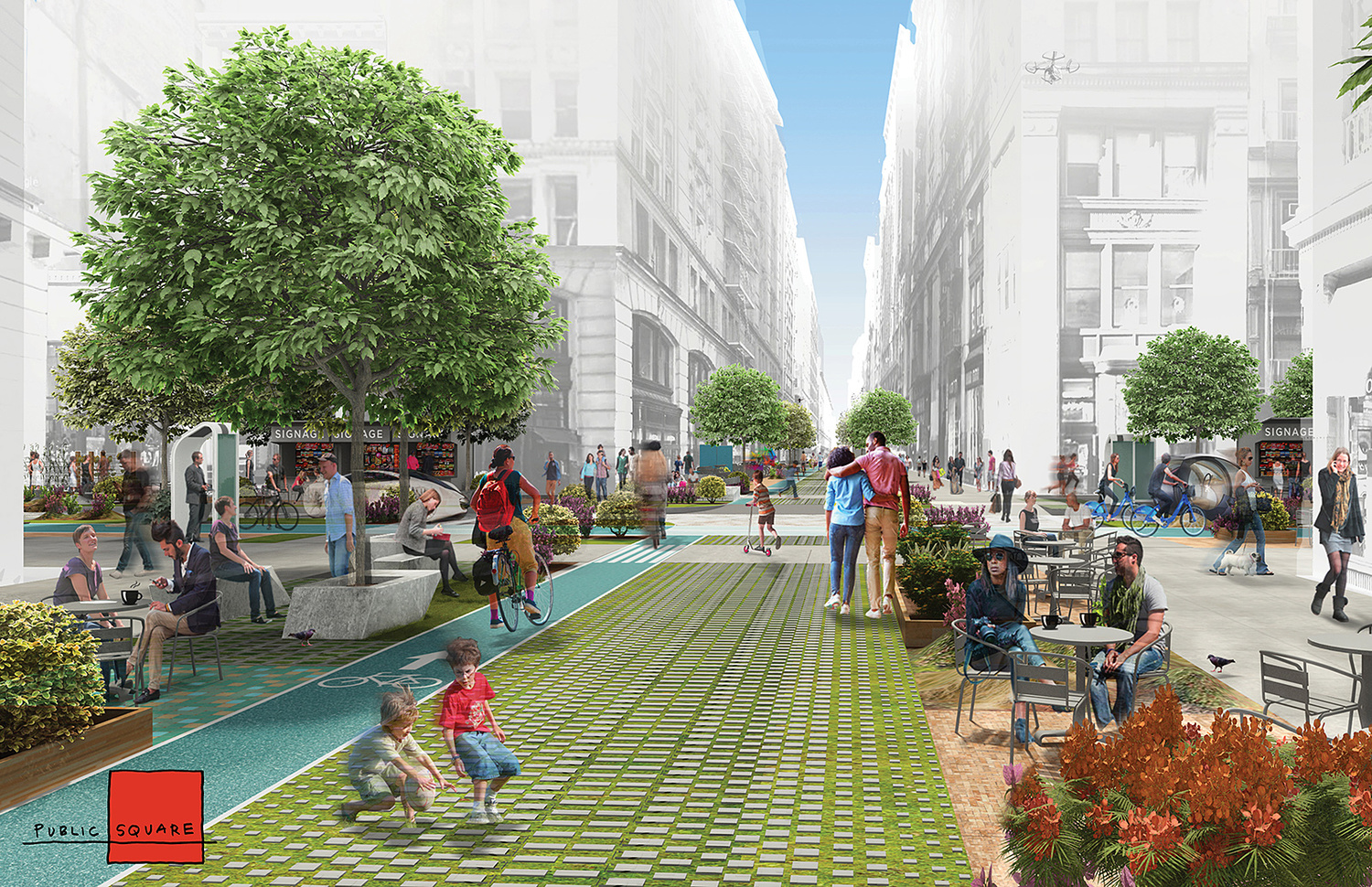by: Anna Gibertini
The Driverless Future Challenge, organized by AIA New York in partnership with the City of New York, New Lab, and Fast Company, came to a close on 07.11.17 with the lively presentation of the four finalists’ visions of a world populated with autonomous vehicles. New York City-based architecture firm FXFOWLE, in partnership with Sam Schwartz Engineering, won the competition with their modular streetscape system “Public Square,” which now has a patent pending. Other contenders included driverless farm-to-table food trucks; “smart curb” technology with an aim to coordinate and ease high-density bottleneck traffic zones; and an autonomous vehicle extension of MTA’s limited options for disabled commuters. The five person jury panel consisted of members of the Department of Transportation, the Economic Development Corporation, the Taxi and Limousine Commission, the Department of City Planning, and one representative from Brooklyn-based, tech workspace New Lab. As a part of its winnings, the “Public Square” team will have access to New Lab and all of its resources to build a working prototype of their idea.
Public Square differed from its competitors in that the design team did not make any assumptions about what the driverless future will look like. During the firm’s presentation, FXFOWLE Principal Jack Robbins, AIA, LEED AP, explained “We couldn’t come to a consensus on how autonomous vehicles would shape the future of New York. So instead, our design is built upon allowing the city to be flexible and experimental in its transition to a driverless future.”
The design incorporates a “plug-and-play system of interlocking unitized squares, roughly 8’x8’ in size, with built-in infrastructure and a wide variety of surface module programs”, which can include public restrooms, community gardens, bike paths, green space and public seating. These programmatic modules are designed to sit on top of pre-existing streets and can be easily installed, reconfigured and removed, easily responding to the needs of the city as it moves into a driverless future.
Urban Oasis’ farm-to-table food truck and QueueY’s “smart curb” beacon presentations preceded Public Square. Designed by Lily Shi, Yodai Yasunaga, and Jiaming Zhang, Urban Oasis focused on mitigating food deserts through autonomous vehicles that would travel from farms already in the GrowNYC network to areas that lack access to fresh, healthy ingredients. Hexagonal in shape, the vehicles are large enough to hold a human traveler inside who would take stock and assemble CSA boxes en route to these deserts. Once there, the car would “unfold” and become a store front. Urban Oasis also imagined that these irregularly shaped vehicles could be linked together to create pop-up farmer’s markets. When asked how this system would compete with and distinguish itself from meal delivery options like Blue Apron or Fresh Direct, Urban Oasis pointed to the fact that low socio-economic neighborhoods can also be low-tech neighborhoods. The automated vehicles cut out the need for a smart phone or internet access, making access to fresh food truly equitable.
Designed by Daniel Hui, Danil Nagy, Spencer Wright, QueueY focused on creating curbside smart beacons for autonomous vehicles picking up and dropping off travelers at high-density traffic bottlenecks, such as Madison Square Garden. Building off current strategies used by Uber and Lyft at airports, these beacons would function in tandem with ride-sharing apps and independently function as kiosks for travelers using cash. The jurors expressed concern over the mixing of for-hire rides and public transportation imagined in the QueueY system, as well as the proliferation of advertising on city streets that could result from the installation of QueueY kiosks.
Finally, IBI Group‘s SAVe proposed an extension of the MTA’s ADA network to bring disabled travelers directly to public transportation hubs through a ride-sharing app—trips that can take up to an hour or more for a disabled individual to do on their own. While designed for the disabled, autonomous vehicles could also be used by able-bodied travelers. Because the SAVe network would be linked with MTA, MetroCards could be used to pay for the rides. The jurors expressed concerns for the safety of disabled passengers alone in cars that could also contain able-bodied travelers with criminal intent.
During the 20-minute deliberation period, runners-up HAAS Alert and Carmera also presented.








